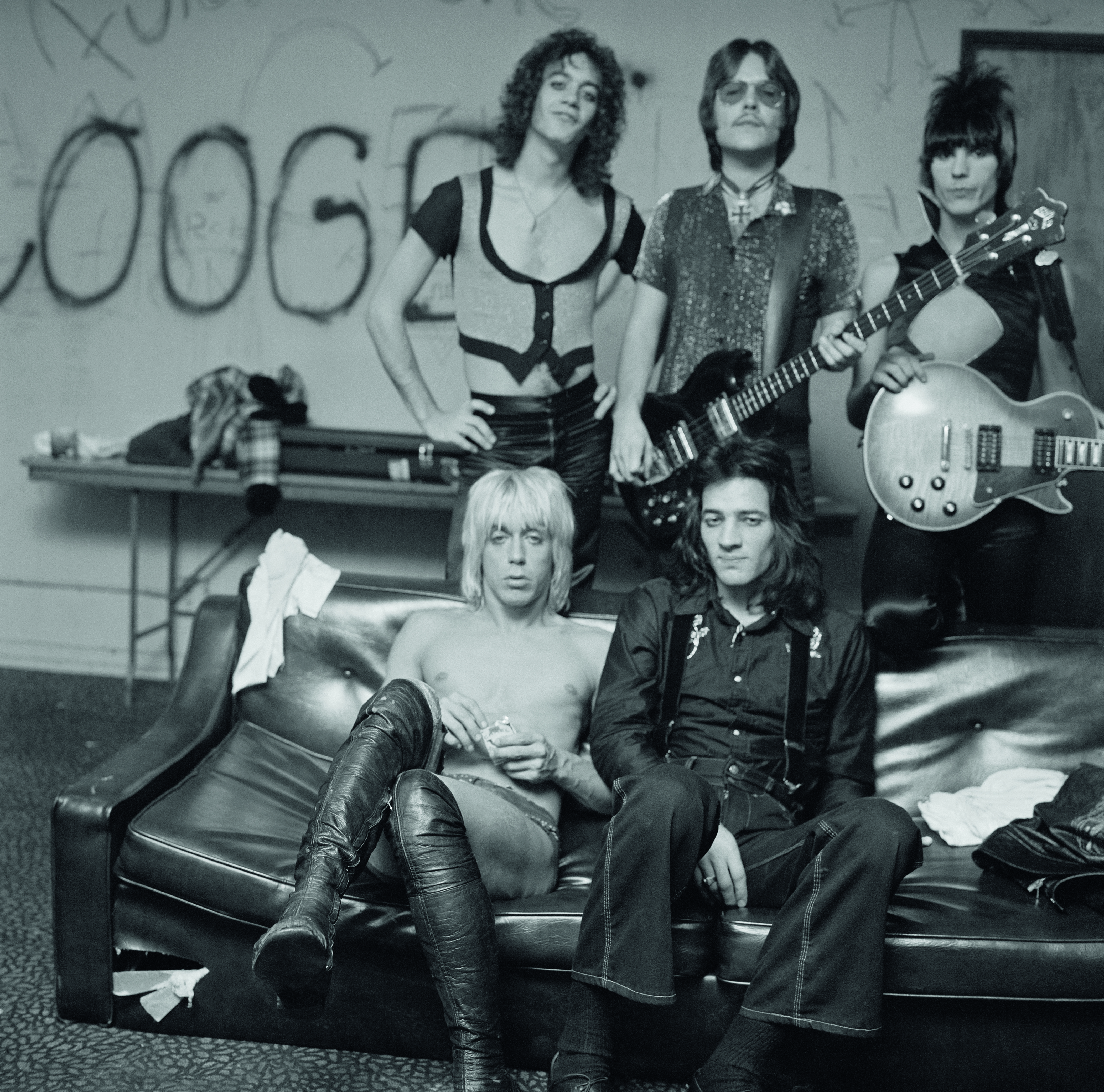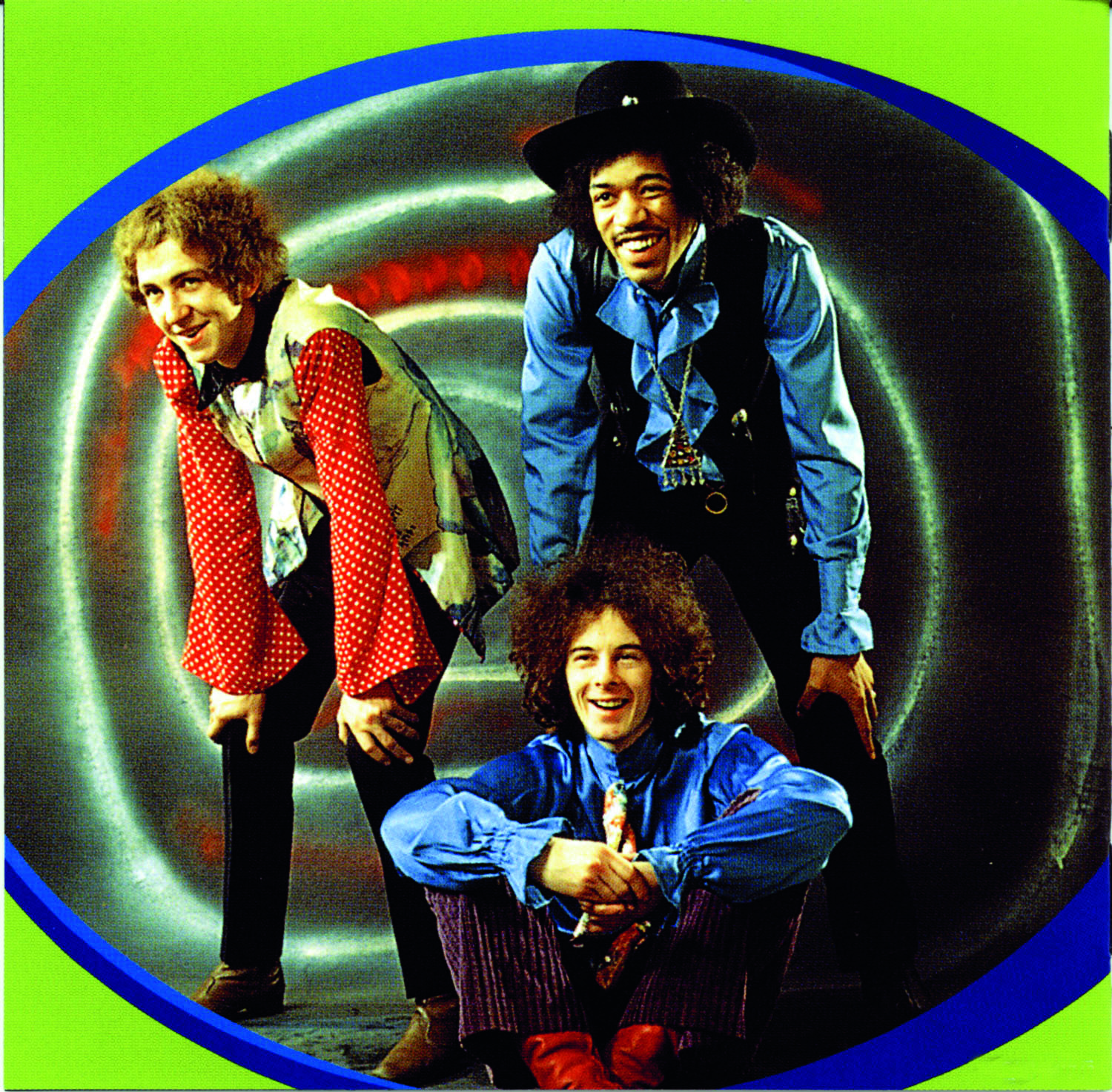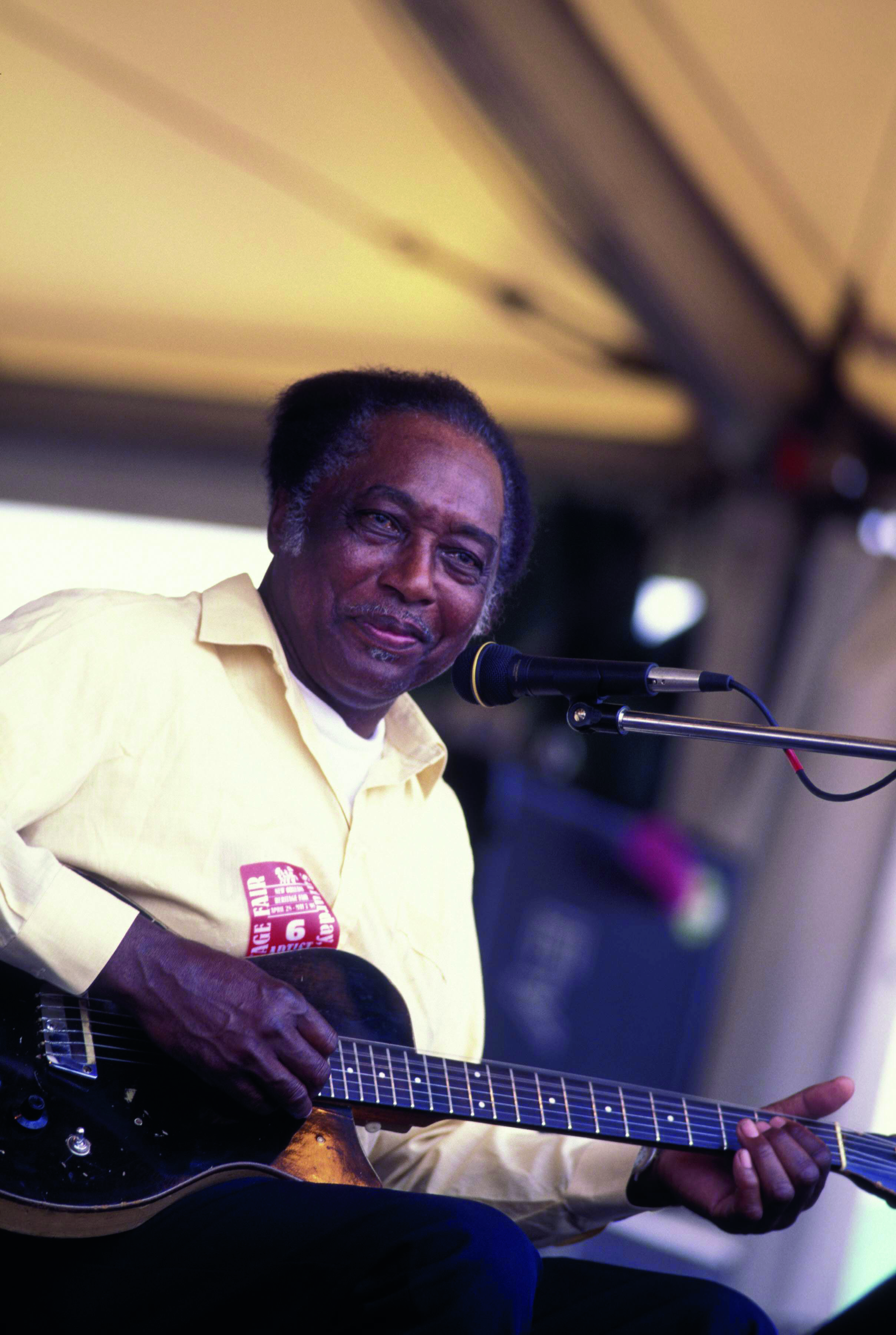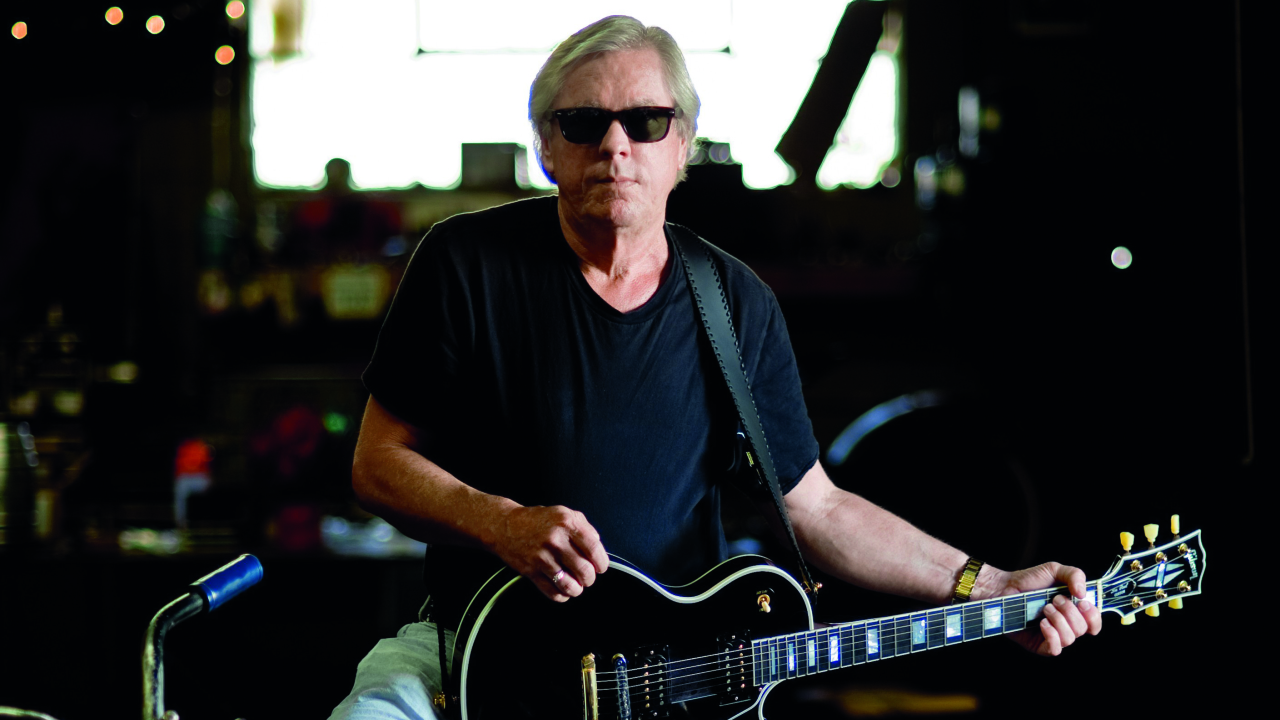People don’t tend to think of The Stooges as coming out of the blues and being blues fans, but that was my and Iggy [Pop]’s background.
Iggy’s band The Prime Movers, they patterned their whole sound on the Paul Butterfield Blues Band and they were the first ones to initiate the Ann Arbor Blues Festival. I was in the Chosen Few – we did Rolling Stones covers and they provided my first exposure to R&B through their covers. They were never scared to credit their influences: they told everyone about Muddy Waters and they took Howlin’ Wolf onto Shindig, but you listen to Keith Richards’ guitar-playing on those songs, and George Harrison’s on The Beatles’ R&B covers, and it’s simple stuff, played quite stiff.
But then you hear the Paul Butterfield Blues Band with Mike Bloomfield. He blows you away every time, his bending and attacking of the notes… it was completely different from everyone else’s approach to playing and it got me on the path to becoming the guitarist I was in The Stooges. They played the Newport Festival, that’s when I first heard about them. This was 1965 and my musical world was expanding: I was discovering Bob Dylan and Folkways magazine. I got that first Paul Butterfield Blues Band album and that was it for me. You’ve got this interracial band, which was just unheard of in Detroit at that time, so they were immediately seen as streetwise and cool. Then you’ve got Mike Bloomfield, who was pretty much a middle-class suburban white guy, not all that different from myself, so I immediately related to that. I began listening, tried to play those solos and tried to get better by imitating them.

A GATEWAY TO THE BLUES
Paul Butterfield Blues Band
Paul Butterfield Blues Band
(Elektra, 1965)
I hadn’t heard of Little Walter and Muddy Waters before, but hearing the Paul Butterfield Blues Band doing Mellow Down Easy, Blues With A Feeling and Got My Mojo Working, all of a sudden I was getting to know who Muddy Waters was, who Little Walter was. They cover Junior Parker’s Mystery Train and Elmore James’ Shake Your Money Maker as well. It was the fundamental stuff of the blues being reinterpreted in a modern Chicago blues style, and it provided a real learning ground for me. Born In Chicago, with that driving rhythm and those bending solos in between the riff, had a huge impact on me. On Look Over Yonder Wall, Mike Bloomfield is playing a slide guitar and I’d never heard that before. This album was full of instruction points for me.
IT INVENTED THE WEST COAST STYLE
The Butterfield Blues Band
**East-West **
(Elektra, 1966)
East-West moved the blues into a new realm of psychedelic raga rock defined by extensive soloing, and it’s what becomes the West Coast style of music at that time. Mike Bloomfield was taking acid and becoming influenced by San Francisco. This is the time of Jefferson Airplane and the Grateful Dead, of Ravi Shankar and raga. They covered Mike Nesmith’s Mary Mary before The Monkees did it. Not long after this record I joined the Stooges playing a style almost anti to what’s on here, but it was still phenomenally influential. We had a great deal of respect for these guys.

**HE TAUGHT ME TO DO MY OWN THING ** ** **
Jimi Hendrix Experience
Are You Experienced
(Track, 1967)
Paul Butterfield brought my attention to the old guys; when they came through Ann Arbor I’d go see them play their folk blues and Chicago blues at these small venues. But the guy who got my attention for being in the right now was Jimi Hendrix. Red House on Are You Experienced, I mean, c’mon, that’s the blues right there! It’s straight, direct, immediate… and the playing, it’s just brilliant. He had a huge impact on me – not stylistically, I couldn’t play like that – but in terms of the interpretation, his ability to express and to take blues to a different level. That really impressed me. It was like he was saying, ‘Hey, you don’t have to play this the way these other guys are playing it, you can do your own thing with it.’ I first saw him play live with the Experience at Detroit’s Cobo Hall, then later I drove to New York all night long to see the Band Of Gypsies. I ended up having to sleep on the banks of the Harlem river with the rats, but it was worth it, they were incredible. They were doing these very extended blues solos and improvisation, really just getting down and doing their thing.
THE KING OF THE RIFFS
Muddy Waters
**Rollin’ And Tumblin’ **
(Aristocrat, 1950)
If you’re talking riffs then Muddy Waters was the king of the riffs. I mean, Rollin’ And Tumblin’ – Jeff Beck did an amazing job of covering that, but it’s still Muddy’s song. Then you’ve got Hoochie Coochie Man, Mannish Boy… everything he’s done is a classic, yet it took the Rolling Stones for people to understand Muddy. I’m always floored by how his songs took so long to become popular. He was an old man before people recognised what he was doing, I guess you could say it’s a little bit like The Stooges [laughs]. We’re in our 60s and I’ll be looking out at crowds in their 20s thinking, ‘What are you doing here watching us old guys?’ Then I think back to me in my 20s, I was doing the same thing back in Detroit and Ann Arbor, watching those old blues guys.
THE BLUES VOICE
Howlin’ Wolf
**Wang Dang Doodle **
(Chess, 1961)
All you have to do is listen to him sing. It’s, like, crazy – his voice, he’s so animated in his delivery, his ability to just get those songs out. Listen to Wang Dang Doodle, who else could make that sound believable? He’s a true original. And once I heard that, I really got into Howlin’ Wolf, and I discovered Evil, a great song; Smokestack Lightning; then there was the _Red Rooster__, _Killing Floor. He didn’t do anything bad.
A BLUES ALBUM MADE BY SOUL MEN ** **
Albert King
Born Under A Bad Sign
(Stax, 1967)
I saw Albert King play live a lot, and he was real badass. Born Under A Bad Sign is an amazing record, that title track. Now there’s a riff! And once you’ve heard it, you can’t go back, it just takes hold of you. He came from Indianola, Mississippi, he played drums in Jimmy Reed’s band, recorded for a few labels then moved to Memphis and signed to Stax where he suddenly came alive. Al Jackson Jr produced him, Booker T Jones and William Bell wrote that title song, the MGs were backing him, the Memphis Horns are on there, too, and you’ve got songs like Crosscut Saw, The Hunter, Oh Pretty Woman, a cover of Kansas City. Great!
THE MISSISSIPPI SOUND
R.L. Burnside
**Too Bad Jim **
(Fat Possum, 1994)
I was in search of that down-home Mississippi sound and he was a force of nature. Too Bad Jim on Fat Possum: it’s the album that really brought him to a wider audience and it was great to get to record for Fat Possum with The Stooges knowing he was on the label. Too Bad Jim was recorded at Junior Kimbrough’s juke joint in Chulahoma with Burnside, backed by drummer Calvin Johnson and guitarist Kenny Brown. It’s amazing stuff. He was influenced by Mississippi Fred McDowell and Lightnin’ Hopkins, no doubt about it, but he was his own man too, he was in the juke joints and sat on his back porch playing the blues.

